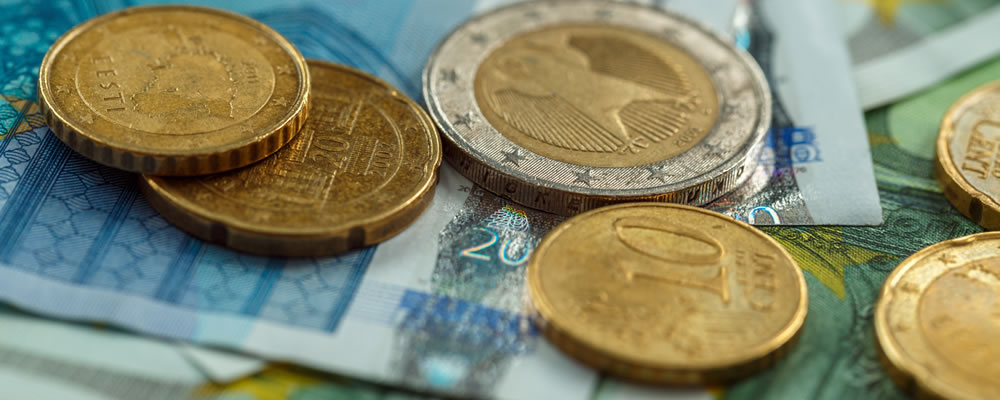The Pound Euro exchange rate has had a tumultuous 12-months, and next year we could see even more volatility. The pairing has recovered from the worst of its pre-Brexit lows, but with a UK recession on the horizon are further gains likely, or will GBP EUR experience a reversal and drop to parity? The way the situation will develop largely depends on three key events – the activation of Article 50 and elections in Germany and France.
Pound Euro Exchange Rate Hits Multi-Year Low as UK Says Au Revoir to EU
It’s a bit of an understatement to say that 2016 was a pretty crazy year for financial markets. It began chaotically with the stock market crash in China and only proceeded to get more volatile as the UK approached the EU referendum and ultimately opted to Brexit.
Given that the final polls leading up to the referendum had pointed to a ‘Remain’ result, the ‘Leave’ outcome took the world by surprise. While all financial markets experienced some element of upheaval in the immediate aftermath of the vote, the currency market recorded particularly dramatic shifts.
The Pound, which prior to 2016 had been holding its own against currencies like the Euro and US Dollar thanks to the comparatively strong performance of the UK economy, plummeted.
Ahead of the referendum analysts had predicted that the Pound could drop to parity against the Euro in the event of a Brexit, and three months after the event GBP/EUR was well on its way to making this estimation accurate.
Will Sterling (GBP) Fall Beyond its 5-Year Low of 1.10?
On the eve of June 23rd the GBP/EUR exchange rate was trending in the region of 1.31, but by October the pairing had crashed to a five-year low of 1.10.
At the time, Bloomberg reported; ‘A three-day decline in the pound after U.K. Prime Minister Theresa May set a date to start the process of leaving the European Union has left sterling trading at its weakest level versus the euro since 2011. The pound reached a 31-year low versus the dollar amid concern Britain is headed for a so-called hard Brexit. A weaker currency may help support parts of the economy as the terms of the EU exit are negotiated.’
This historic slump of 21 cents meant that those moving money to Europe were receiving substantially less than they would have pre-Brexit, while those sending money back to the UK from the continent were enjoying far greater returns.
To put this in real terms, the Sterling slide meant that anyone transferring £200,000 to Europe when GBP/EUR was at its lowest point would have achieved 48,000 fewer Euros than immediately prior to the vote.
Shortly after the UK voted to Brexit, John Cameron (Currency Analyst for TorFX) forecast; ‘the Pound Euro exchange rate could potentially make a run at its record low of just below 1.0200 which it touched off at the end of 2008. One factor limiting the losses for the Pound against the shared currency is the nagging fear that Brexit could trigger similar referendums in other EU states. The prospect of a large Eurozone economy leaving the Euro region may dampen support for the single currency moving forward.’
The Pound did indeed creep closer to this record low in the weeks that followed before staging a recovery, But are there further losses to come? Some industry experts seem to think so – particularly if ‘Hard Brexit’ fears return to the fore. ‘Hard Brexit’ concerns centre on the prospect of the UK losing access to the single market in return for tighter controls on immigration.
GBP EUR Parity Forecast in 2017 if Article 50 is Activated
The Pound (GBP) was already doing less than brilliantly when UK Prime Minister Theresa May sent it reeling further by asserting that Article 50 (the legislation that will formally trigger the UK’s exit from the EU) would be activated by the end of Q1 2017.
As many had hoped the activation would be delayed until Britain was economically and politically prepared for the consequences, the prospect of action being taken by the end of next March proved tough to swallow and the Pound was swiftly driven from a three-year low against the Euro to a five-year low.
Meanwhile, the Pound US Dollar exchange rate crashed to an over 31-year low. The downtrend in ‘Cable’ was also due to the expectation that the Federal Reserve would hike interest rates in December – a full year after beginning its tightening cycle in 2015.
The High Court later ruled that Article 50 couldn’t be activated without a Parliamentary vote, and the prospect of either the legislation being delayed or a ‘hard Brexit’ (whereby the UK would lose access to the single market in favour of tighter immigration controls) being avoided helped the Pound push above 1.12 against the Euro and achieve a multi-week high against the US Dollar ahead of the US Presidential election.
However, if Article 50 is invoked, or if the Bank of England (BoE) unleashes further stimulus in an attempt to protect the UK from the economic fallout of that step, the Pound Euro exchange rate is expected to spiral lower once more.
Predictions that the Pound could sink to parity (where one Pound is equivalent to one Euro) are also more likely to become reality in the New Year.
A number of other factors may trigger GBP/EUR volatility, including the US Federal Reserve’s stance on interest rates, the European Central Bank’s approach to asset purchasing and the upcoming elections in France and Germany.
If the French and German elections shock in the way that Brexit did, the Pound may be saved from parity.
But while some of these concerns may weigh on the Euro (and hinder the GBP/EUR downtrend to a certain extent) the Pound’s long-term outlook remains neutral/negative.



